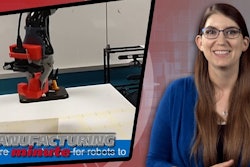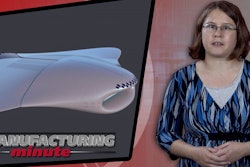The current trend of automation and data exchange in manufacturing technologies, or Industry 4.0 as it’s called, is revolutionizing the way products are planned, produced, sold and used. As manufacturers transition from the hardware-centric business models of the past to the current digital model characterized by software, data and services, it’s clear that the IoT is shifting company operations and creating new revenue opportunities. Businesses need to have a plan ready to stay ahead of the curve – and the following tactics will boost results if integrated into their respective IoT monetization strategies.
Tactic 1: Define your IoT monetization goals
Before you implement new models, a good practice is to take a step back and review your goals. Here are some ideas to get started when incorporating digital solutions:
- Impact revenue growth. Ask how you can monetize software, create flexible pricing models and add new features and services over time.
- Improve efficiency. Ask how you can eliminate manual processes, implement remote monitoring/services/maintenance, increase order accuracy and reduce downtime/waste.
- Increase customer satisfaction. Ask how you can provide a simple end-user experience, implement customer self-service and streamline end-to-end processes.
- Protect intellectual property (IP). Ask how you can minimize unauthorized use, stop grey market abuse and improve compliance across the board.
Tactic 2: Consolidate your software licensing information
In a manufacturing environment, it’s essential to know what software is running where. From a business perspective, it tells you who owns what and ensures you’re on top of monetization. From a customer perspective, it helps manufacturers provide a positive experience of helping customers understand what they have licensed, their number of users, renewal needs and more. From a compliance perspective, a unified view helps guarantee compliance with highly regulated and controlled production environments and keep a high-security level by analyzing software for vulnerabilities and deploying software upgrades and patches. Furthermore, support cost and field service activity can be reduced by enabling appropriate remote diagnostics and maintenance procedures.
A central entitlement management system will help consolidate your software licensing information as well as offer other benefits. You gain a unified customer experience, even if different products still use unique license generators as well as a smooth transition towards Cloud and SaaS offerings. Other wins include a reduction in operating costs, up-sell & renewal opportunities, visibility into channel sales and overall insight into market dynamics.
Tactic 3: Start selling “use rights”
Selling “use rights” instead of a product is becoming more popular in the industrial automation industry. It’s a highly flexible model where the manufacturer retains ownership but can deliver different products through as-a-service models, including subscription, pay-per-use and pay-per-outcome (e.g., actual cars produced, scans taken). Some manufacturers offer hybrid models by continuing to sell the hardware while applying flexible monetization models to the software only.
Tactic 4: Increase customer satisfaction
Because new monetization models involve dynamic business information, manufacturers need to offer direct access, often called self-service, to customers for transparency and ease of use. For example, an intelligent device manufacturer who wants to lower costs by moving manufacturing to a third party will need to understand their licensing to assess the impact. By enabling self-service information, clients can see what they have, what they’re using, and react in the best way.
Tactic 5: Close the security gap
Security can be effective if it’s designed into the product and applied in all the layers that make up the IoT. Since embedded software often uses Linux systems and nine out of 10 IoT developers use open source code, it’s important to stay in compliance with open source licenses and manage vulnerabilities. Steps include identifying open source and third-party components, creating a Bill of Materials and implementing permission workflows to register any new components before use and shipping.
Implementing the right software licensing technology also protects companies that outsource their manufacturing processes to third-party manufacturing shops from grey market abuse. For example, manufacturers can implement a “call home” to a cloud-based license server to obtain an activation license and make the device operational. If an illegally manufactured device tries to do this, it will not be granted a license and, in turn, will not function.
While it’s imperative to consider the above tactics for your IoT monetization strategy, it’s equally as important to make sure your company is informed and up-to-date on new product offerings on the market, especially those focused on digital solutions, data and outcome, as well as pricing and product packaging. New offerings can also pave the way for different, more flexible licensing models that decrease impact on cash-flow.
By making sure these tactics are considered when outlining an IoT monetization strategy, manufacturing companies will see an increase in not only the revenue opportunities, but in the flexibility that the IoT has to offer.
Matthew Dunkley is senior director, strategy and product management, at Flexera.























